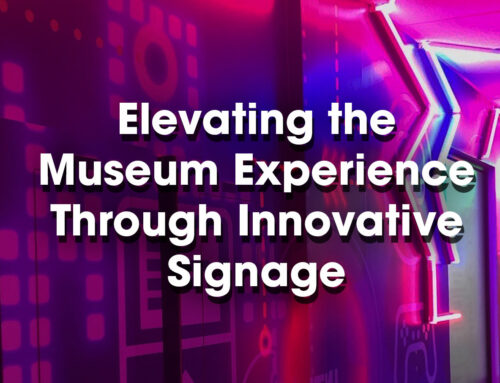Wayfinding in healthcare facilities is among the most challenging and potentially rewarding. Even slight increases in healthcare efficiency can result in enormous cost-saving improvements as patients and their families need less support from staff for navigation and information. When developing a system it is important to consider the following six rules for effective wayfinding development.
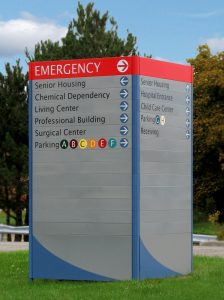
1. Use Diverse Visual Cues
Successful systems do not contain just words and arrows, but a mixed vocabulary of imagery, symbols and color as well as architecture, interiors public art, and landmarks. Relying too much on signs, in fact, makes environments less legible, as people begin to be blinded by too much information. These elements can be diverse, but should be coordinated together to reduce clutter and be read as one cohesive approach. At the UF Health Springhill medical center, imagery, symbols and color complement the wayfinding program.
2. Establish Hierarchy and Consistency
The key to a successful system is consistency, so that visitors can anticipate where each element will be as they proceed on their journey through your facility. Consistency is achieved by designing all elements in the system with a cohesive visual language. The signs then follow a clear hierarchy where directional wayfinding signs appear at similar heights and junction points, and identification signs have a logical and consistent placement.
3. Integrate Wayfinding into the Architecture and the Brand
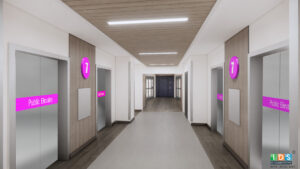 When developing a wayfinding system vocabulary, one key goal is to integrate the wayfinding signage into both the building architecture and the information system. At the macro level, wayfinding signage design should complement the building and interior design; while at the micro level, the brand graphics, destination terminology, and management language should be consistent with the current brand identity design.
When developing a wayfinding system vocabulary, one key goal is to integrate the wayfinding signage into both the building architecture and the information system. At the macro level, wayfinding signage design should complement the building and interior design; while at the micro level, the brand graphics, destination terminology, and management language should be consistent with the current brand identity design.
4. Incorporate Areas for Additional Information
Wayfinding is not just about locating destinations, but being kept up to date with the latest patient information and overall facility messaging. Patient information boards, electronic message centers, and display cases should be designed into the system with a plan in place for information updating. At the F.F. Thompson Hospital, Information Systems through Patient Information Boards are a crucial part of the overall sign strategy.
5. Anticipate Change
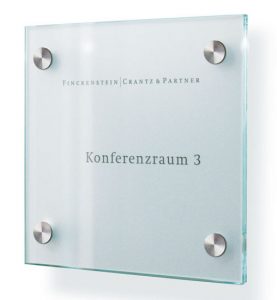 Wayfinding systems are typically built to be in place for ten or more years, but anticipate frequent changes – new rooms and buildings coming on line; departments expanding and contracting; brands being updated; or even ownership changing. Successful wayfinding systems accommodate such change. Signs should be built to easily alter and replace information. They should also be designed with easy-to-access replacement parts.Modular signs come in a variety of systems from standard to custom. The Artemis system distributed by ID Signsystems is highly standardized. The Cristallo system may use backers and additional accents to be highly customized.
Wayfinding systems are typically built to be in place for ten or more years, but anticipate frequent changes – new rooms and buildings coming on line; departments expanding and contracting; brands being updated; or even ownership changing. Successful wayfinding systems accommodate such change. Signs should be built to easily alter and replace information. They should also be designed with easy-to-access replacement parts.Modular signs come in a variety of systems from standard to custom. The Artemis system distributed by ID Signsystems is highly standardized. The Cristallo system may use backers and additional accents to be highly customized.
6. Plan for Future Management
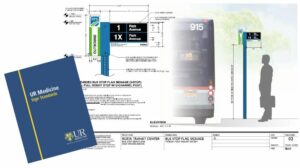 Along with modularity, a well-planned management approach should be developed for the signage system. In particular, clear and easy-to-access design guidelines, along with instructions for cleaning, replacement, additions and expansions should be available. Finally, design guidelines should contain a clear system logic that explains the philosophy and functionality of the wayfinding system.
Along with modularity, a well-planned management approach should be developed for the signage system. In particular, clear and easy-to-access design guidelines, along with instructions for cleaning, replacement, additions and expansions should be available. Finally, design guidelines should contain a clear system logic that explains the philosophy and functionality of the wayfinding system.
Let’s Talk About Your Project

